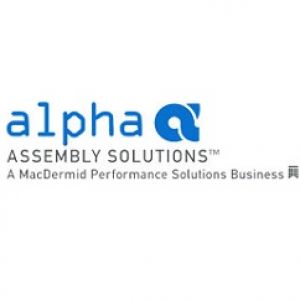SAC305 Soldering ? A Beginners GuidePosted by Alphaassembly on May 29th, 2018 Lead-free soldering is becoming a norm as more electronic manufacturing companies are shifting to processes that will keep their employees and consumers safer and healthy. The lead-free alloys like Sn95.5Ag4Cu0.5 and Sn96.5Ag3Cu0.5 are particularly suitable when adopting SAC305 soldering to replace the use for the Sn63 alloy. Using those variants, you can reduce or stabilize copper content in a wave solder bath. While this requirement may still be affected by process conditions, these alloys can help your manufacturing company shift to reliable lead-free soldering for certain electronic products and components. Keep in mind that not all fluxes and alloys can work with SAC305 soldering. So far, the most commonly used alloys for wires are tin-copper and tin-silver-copper-based solders. SMT assemblers and wave assemblers typically use tin-silver-copper, and wave soldering considers tin-copper. The melting points are the main factors that differentiate SnCu and SAC solders, where the latter melts at 227° C, and the former at around 217°C. SAC305 soldering is already being adopted by certain companies due to the European WEEE (Waste from Electrical and Electronic Equipment) and RoHS (The Use of Certain Hazardous Substances in Electrical and Electronic Equipment) directives and other similar mandates. Moreover, some electronic manufacturing companies are shifting to lead-free soldering to appeal to their target consumers, as people are more likely to buy products they know are safe. As long as you choose a high-quality, lead-free solder for an appropriate product, you should find it easy to adopt the process into your own company. Lead-free soldering is already being applied to the manufacturing of specific products, like small and large household appliances, consumer and lighting equipment, electronic and electrical tools, automatic dispensers, control and monitoring instruments, and toys. High-quality Sn96Ag4 and Sn97Ag3 alloys can effectively remove oxides and other impurities that could affect the soldering process. This way, cleaner and efficient joints are assured. There are many benefits to SAC305 soldering, such as best-in-class, higher yield that could outperform the performance of materials that are Sn/Cu-based. Wetting speed is faster, while ensuring superb solderability and minimal dross generation. Drainage is good as bridging is minimized compared to when Sn/Cu alloys are used. As a result, its performance is considered more excellent when used on different flux technologies. About the Author: Alpha Assembly Solutions, Inc. is the global leader in the development, manufacturing and sales of innovative specialty materials used in a wide range of industry segments, including electronics assembly, power electronics, die attach, LED lighting, photovoltaics, semiconductor packaging, automotive and others. Since its founding in 1872, Alpha has been committed to developing and manufacturing the highest quality specialty materials. Like it? Share it!More by this author |


